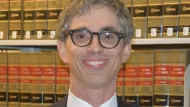And why it is wrong.

Recently, the federal government approved an environmental assessment for Manhattan’s congestion pricing program, allowing the program to go forward. By making driving more expensive, the program is likely to reduce pollution, injuries from traffic crashes, noise and automobile-related congestion in Manhattan, and will provide tax revenue for New York City’s public transit program.
Nevertheless, this program is quite controversial. One of the most interesting arguments against the program is that it is actually bad for Manhattan. For example, polymath and economist Tyler Cowen argues that to the extent congestion pricing succeeds in reducing congestion, it will reduce the flow of humans going into Manhattan, thus reducing revenue for Manhattan’s businesses, cultural attractions etc. This argument has some factual basis: even if most would-be drivers will be lured onto mass transit by congestion pricing, some number exceeding zero will avoid the city instead.
The argument rests on an assumption that a city is most appealing when automobile commuting is easy. But this assumption seems inconsistent with historical reality. This is the assumption that justified the “urban renewal” policies of the mid-20th century: city leaders used eminent domain to physically destroy city neighborhoods in order to build highways (and widen surface streets) leading to suburbia, so that suburbanites could drive to the city more easily. In addition, the same city leaders instituted minimum parking requirements so that suburbanites could park in the city more easily, thus turning downtowns into a wilderness of parking lots. If Cowen’s assumption had been correct, mid-century Americans would have flocked to renew old urban neighborhoods, since the cities were so easy to enter and exit. Instead, the highways and parking made it easier to commute from city to suburb, and thus encouraged commuters to move to suburbs. And after the commuters moved, jobs and businesses moved with them, and central cities declined. *
The least drivable and most congested cities, such as New York City, survived urban renewal with most of their population intact: New York lost only 11 percent of its population between 1950 and 1980, and its current population now exceeds its 1950 population. By contrast, low-congestion cities (other than those that annexed huge chunks of suburbia) suffered horribly: for example, St. Louis has lost over a third of its 1950 population.**In those cities, urban renewal was very, very successful at facilitating automobile commuting—as a result, it was very, very unsuccessful in renewing the city.
In sum, a “drivable” city is not necessarily a prosperous one. So if making cities like Manhattan easier to drive through doesn’t make them more appealing, it logically follows that making them harder to drive through won’t make them less appealing.
*Admittedly, highways were not the only cause of suburbanization. However, there is certainly some scholarly evidence of a causal relationship. Moreover, most other possible causes of suburbanization (rising crime, corruption, failed school integration, etc) existed in New York just as they existed in St. Louis or other declining cities.
**Can I prove that there is a causal relationship here? Because we don't know which cities were most congested in 1950 or 1970, it is hard to be sure. One might argue that New York is more congested only because it has not lost population. On the other hand, it seems to me as a matter of common sense that if it is easy for workers to live in the suburbs and drive downtown, they are more likely to live in the suburbs than if such commuting was more difficult.

Plan to Potentially Remove Downtown Milwaukee’s Interstate Faces Public Scrutiny
The public is weighing in on a suite of options for repairing, replacing, or removing Interstate 794 in downtown Milwaukee.

‘Forward Together’ Bus System Redesign Rolling Out in Portland
Portland is redesigning its bus system to respond to the changing patterns of the post-pandemic world—with twin goals of increasing ridership and improving equity.

Can New York City Go Green Without Renewable Rikers?
New York City’s bold proposal to close the jail on Rikers Island and replace it with green infrastructure is in jeopardy. Will this compromise the city’s ambitious climate goals?

700-Acre Master-Planned Community Planned in Utah
A massive development plan is taking shape for lakefront property in Vineyard, Utah—on the site of a former U.S. Steel Geneva Works facility.

More Cities Ponder the End of Drive-Thrus
Drive-thru fast food restaurants might be a staple of American life, but several U.S. cities are actively considering prohibiting the development of new drive-thrus for the benefit of traffic safety, air quality, and congestion.

Air Pollution World’s Worst Public Health Threat, Report Says
Air pollution is more likely to take years life off the lifespan of the average human than any other external factor, according to a recent report out of the University of Chicago.
Placer County
City of Morganton
HUD's Office of Policy Development and Research
Dongguan Binhaiwan Bay Area Management Committee
City of Waukesha, WI
Los Angeles County Metropolitan Transportation Authority
Indiana Borough
Write for Planetizen
Urban Design for Planners 1: Software Tools
This six-course series explores essential urban design concepts using open source software and equips planners with the tools they need to participate fully in the urban design process.
Planning for Universal Design
Learn the tools for implementing Universal Design in planning regulations.




